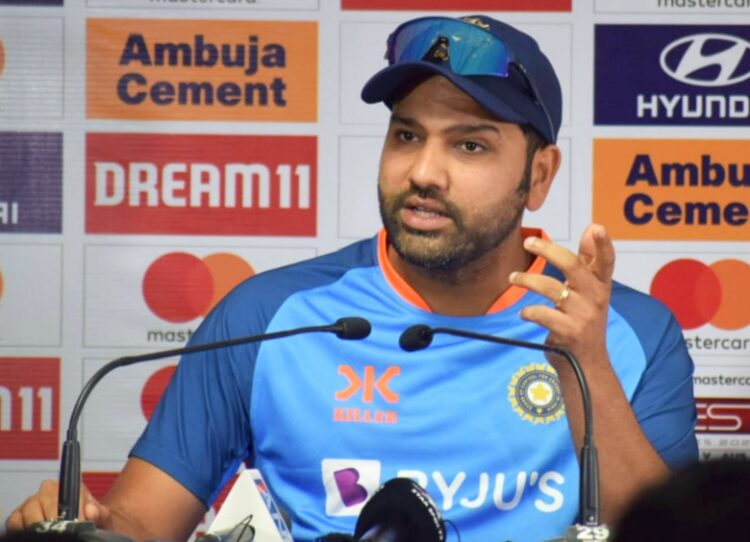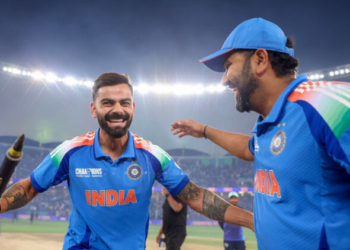New Delhi: After two days of roller-coaster action in the second Test at the Arun Jaitley Stadium, there was huge anticipation around what would happen on day three of the match. Australia had ended Day Two with a slight edge — 61/1 in 12 overs, with a healthy run rate of 5.08 and a lead of 62 runs.
But India had other plans — through Ravichandran Ashwin and Ravindra Jadeja, who took three and seven wickets respectively, Australia were bamboozled and crashed to 113 all out. When the hosts’ looked under pressure in the final session on day two, they completely turned the tables on day three in spectacular fashion.
India skipper Rohit Sharma attributed the stunning turnaround to keeping things simple, being calm and not changing field placements consistently.
“Sometimes you got to keep it simple; not complicate too much about what is happening. Yesterday, we bowled 12 overs and they were 61, which is more than five and a half.”
“I could see that we were panicking a little bit and trying to change fields way too many times. But in the morning, we wanted to tell those three guys that just keep it calm and we don’t need to change fields as often we did last evening,” he said in the post-match press conference.
Before day three began, Jadeja had conceded 31 in his first six overs while Ashwin himself was going over four runs in economy rate. But on Sunday, the duo got the ball to turn, and grip never gave any room for the batters to breathe easy, bowled deliveries which kept low and aided by Australia’s insipid batting as well as questionable shot selection, they were able to put India in the path of winning the match.
“We keep it there, keep it tight and let batters make a mistake. I could sense that they wanted to play it that way and that was a wicket where you could not keep playing your shots. You got to find balance and try to put them under pressure. That is what we wanted to try and do this morning; just keep it tight. If they are playing some shots, so be it and we will not move away from what we want to do as a bowling unit.”
“Axar, Jaddu and Ash have played a lot of cricket in these conditions. You got to have trust in them when things are not going your way. Those batters in the opposition are quality batters too; they are bound to be partnerships and things that are not expected to be happening. It’s Test cricket and they are one of the top teams as well. There will be times where we will be put under pressure and we need to absorb that pressure, keep it there and let the pitch do the rest,” elaborated Rohit.
Asked about the importance of technique and having the confidence as well to execute it to perfection, Rohit felt that the pre-series camp in Nagpur gave them the clarity to make extensive plans as per venues and pitches for the four-game series.
“There is a technique in everything, either you are defending or playing shots like sweep, reverse sweep or down the ground. All the boys are playing for India right now and have been playing from the grassroots level and the things you are talking about right now come from those grassroots levels. I feel that when you are playing on pitches like this, you need to have confidence in your technique and you get the chance to do all of this in preparation/practice sessions.”
“We had six, seven days before Nagpur Test and utilised them very well. The batters focused on playing some kind of shots in those days. Like, at Nagpur, on a red soil pitch, you have to play shots differently. Here, it was black soil, so sweep was not a good option and stepping down the pitch to play the shots was the safer option, which is what I feel. Batters come with different thinking and ways of playing.”
“The main thing is, you need to have confidence in the ways you are playing. During the batting meetings and when the game is on, is that who is comfortable playing what. I feel that all batters are comfortable in their plans and the kind of shots to be employed as when are you playing on wickets like this, it is very important to make runs here. Even if you play 100 or 200 balls, making runs is important otherwise you can’t play the shots well. All of these things are discussed within our group.”
An aspect which has been extremely important in the New Delhi Test has been the usage of DRS. While Australia lost all three reviews within the first 45 mins of the second day’s play, India were a bit judicious with it, though they lost one review while trying to get Marnus Labuschagne out and David Warner in the first innings on day one.
“It is quite tough. You cannot be perfect with those calls. Except for the umpire, no one is in a better position to make those calls as a bowler is in his position and moving, the keeper is behind the batter and the captain is moving around as well. You try to discuss a few points like whether the impact is in line, what is the height and that kind of things, which is the clear message amongst our group that only bowler, keeper and captain will discuss what is the outcome of that ball because it is literally 15 seconds and we don’t have much of that time.”
“Unless other players feel that it has hit the bat or pad, otherwise it is very hard as you have to rely on your keeper and batter. We are trying to be perfect in that aspect as you try to take the right calls, but cannot be always right. You have 3 DRS calls, and take chance with one. But with the next two, you just got to be spot on and get the calls right,” concluded Rohit.
India’s third Test against Australia will be from March 1-5 at the Holkar Stadium in Indore.
(IANS)














